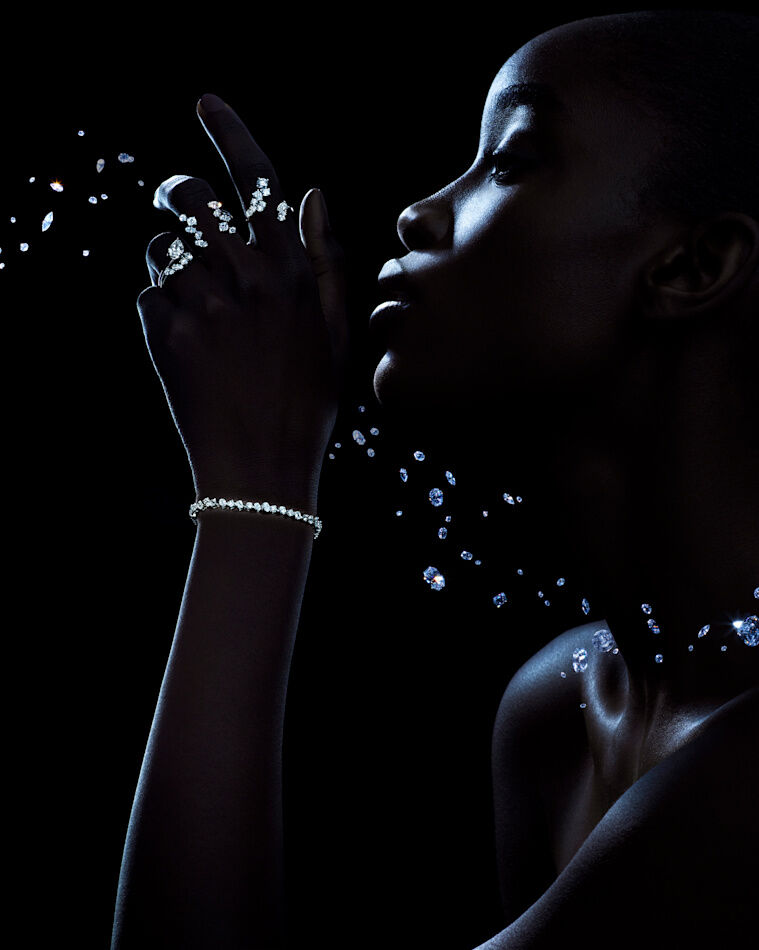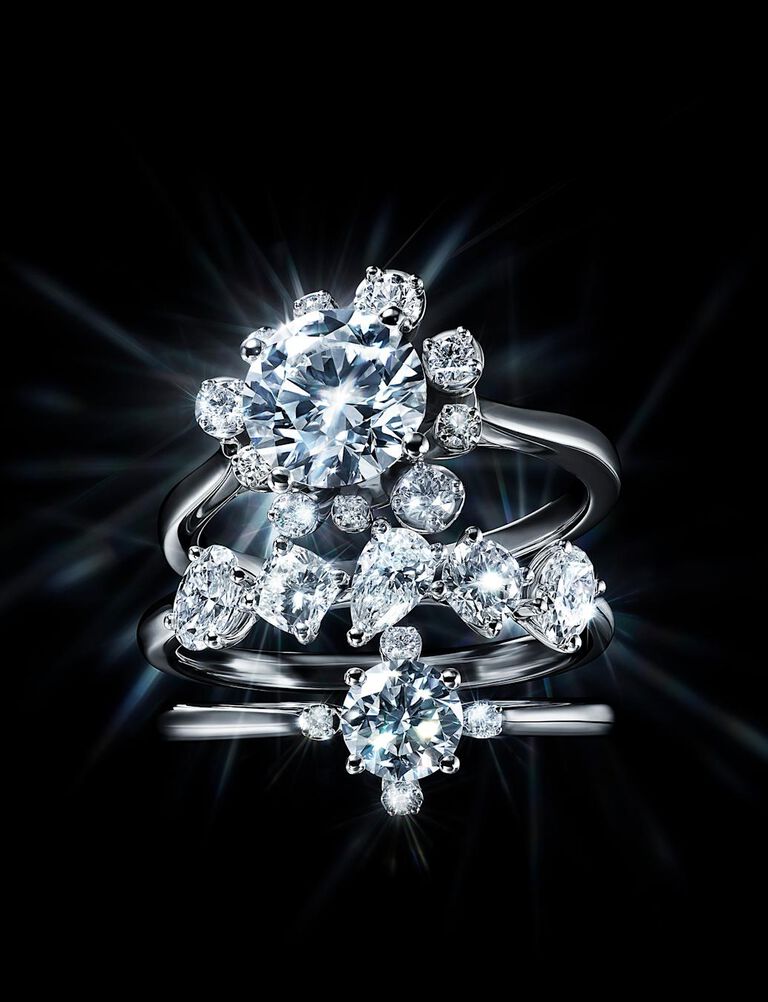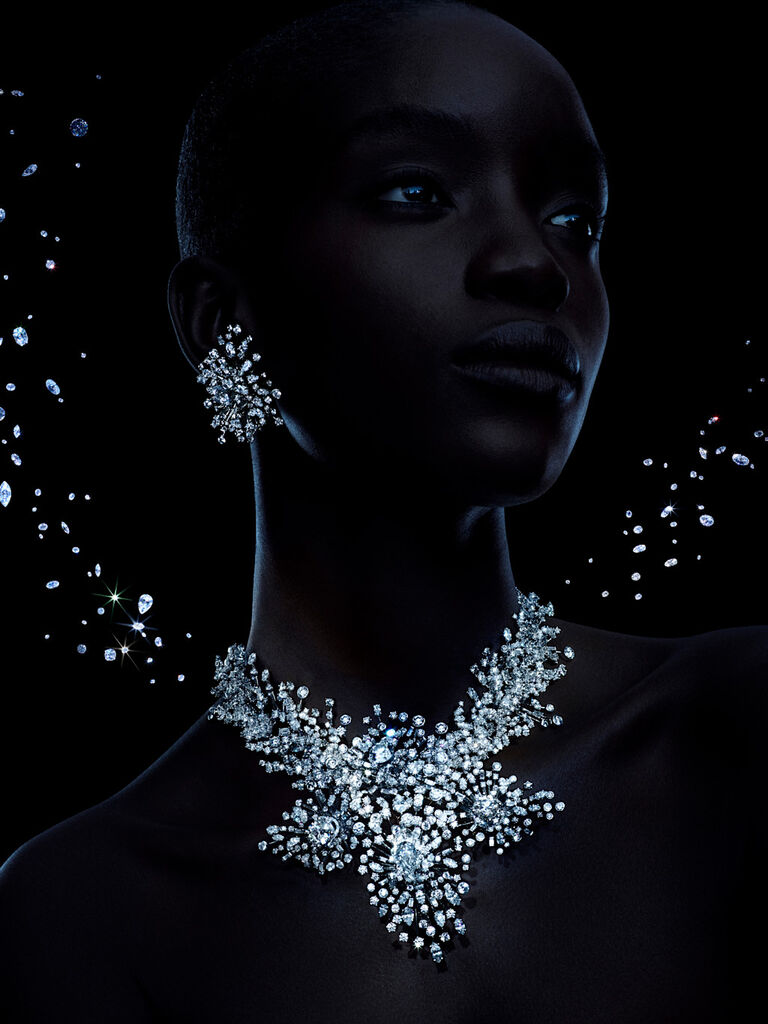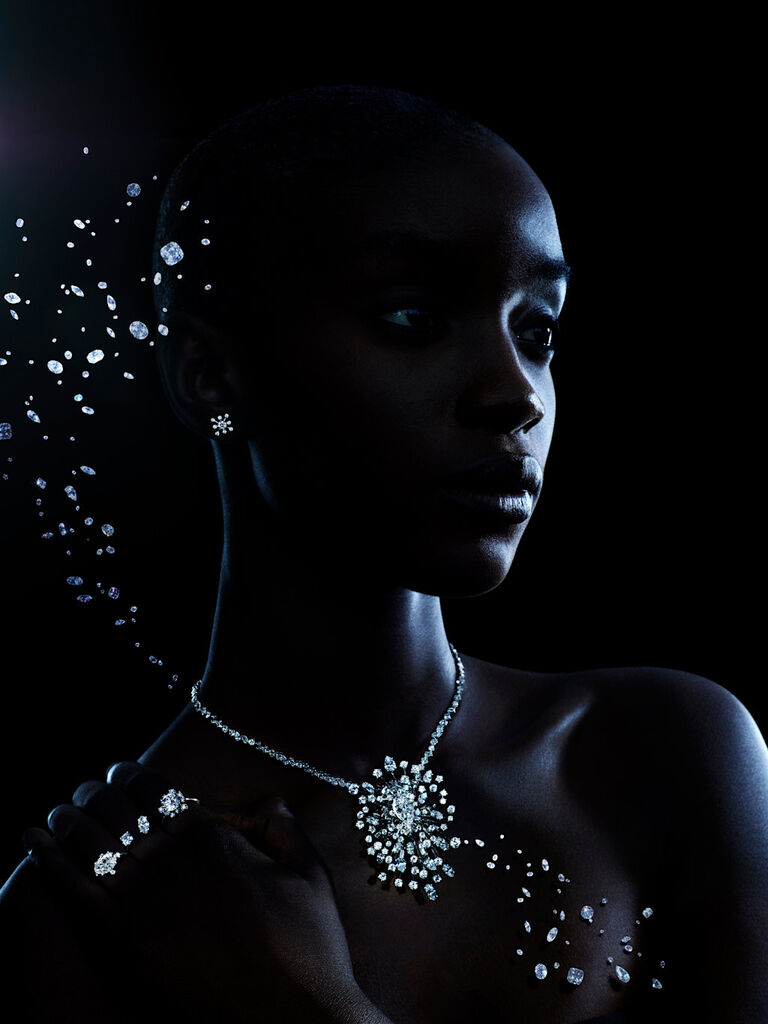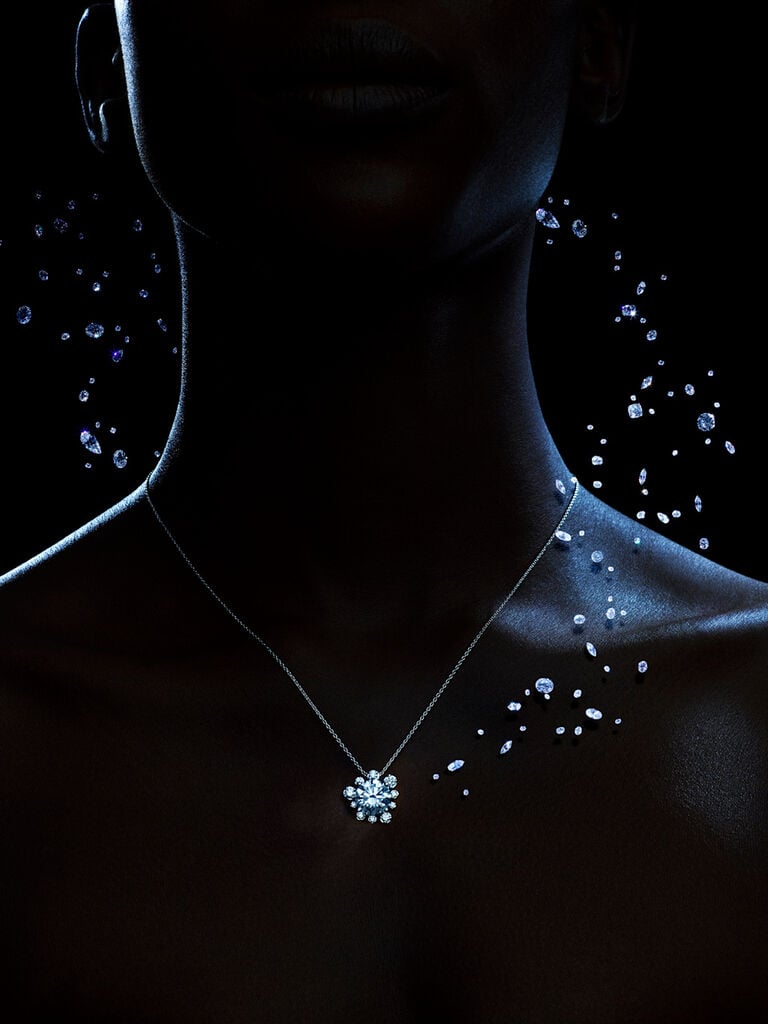What Are the 4Cs of Diamonds?
Universally recognized, the 4Cs are a guiding light in the world of diamonds, helping to determine the quality and value of each stone - the 4Cs stand for color, cut, carat, and clarity. The laboratory grown diamonds in the Swarovski Created Diamonds collections are graded against these 4Cs by IGI, the International Gemological Institute. The laboratory grown diamonds in these collections are of very fine quality: G+ in color and VS+ in clarity.
Clarity Principles and Factors
The clarity of a lab grown diamond is judged by its flaws, which means the inclusions and blemishes that give it unique character and charm. Discover more about diamond clarity below.




The highest possible clarity of diamond is an internally flawless (I.F.) stone. These are incredibly rare and most mined and laboratory grown stones have inclusions.
While almost all diamonds are flawed, those graded between I.F. and SI 2 have inclusions that aren’t visible to the naked eye, only under magnification.
The different types of diamond inclusion include feather, pinpoint, cloud, and metallic. Metallic inclusions are only found in lab created diamonds.
Inclusions and blemishes can have an impact on the way a diamond reflects and absorbs the light.
Cut Principles and Factors
The quality of how a lab grown diamond is cut is based on its proportions, symmetry, and polish. An expert cut creates a multitude of facets, absorbing and reflecting the light so the stone shimmers from every angle.




A diamond cut shape that is perfectly symmetrical with aligned facets will reflect the light at the highest possible intensity, emitting a powerful shine.
Diamond cuts are graded by the GIA on a scale of Excellent to Poor. An excellent cut requires technical mastery, artistry, and expertise.
Facet is the term used to describe each flat surface that makes up the surface of a diamond, each absorbing and dispersing the light differently.
While proportion, symmetry, and polish determine a diamond’s place on the diamond cut table, there is no best cut when it comes to a stone that sparks joy.
Color Principles and Factors
Colorless stones are the most desirable in the world of diamonds and they are extremely rare. Swarovski Created Diamonds are evaluated against the standardized diamond color scale.




Truly colorless diamonds are extremely rare. Also known as ice white, D diamonds are also the most expensive diamond color to buy.
Finding a D diamond color isn’t always important when selecting your stone. A warm white might suit your individual style more than an ice white.
Each diamond’s color grade is assessed in a laboratory using controlled lighting, with the stone faced down, and with master samples used for comparison.
Laboratory grown diamonds do not include any intentional blemishes or the color defects that can come from the use of poorer quality carbon seeds.
Discover Diamonds
Forever Brilliance
Discover Swarovski Created Diamonds
DISCOVER DIAMONDS
